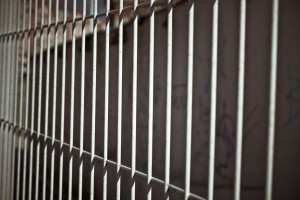
Although crime rates have declined significantly over the past few decades, admissions to local jails have almost doubled over the last 30 years, a clear sign that the current system isn’t working.
According to a report from the Vera Institute of Justice, local jails in the United States are grossly misused. Local jails are designed to hold individuals who have yet to be convicted of a crime but who have been deemed a flight risk or too dangerous to be out in public. Instead, the Institute says local jails are becoming prisons for the poor and mentally fragile.
The report suggests that 60 percent of those jailed are too poor to pay the minimum bail required for even minor crimes. Oftentimes these offenders are charged with crimes like drug, traffic or public order defenses, and they typically are plagued by one or more social problems, like substance abuse, poverty, homelessness or mental illness.
The Vera Institute Report believes the current system isn’t helping fix the real problem of mental illness.
“The consequences are corrosive and costly for everyone because no matter how disadvantaged people are when they enter jail, they are likely to emerge with their lives further destabilized and, therefore, less able to be healthy, contributing members of society.”
Hennepin County Sheriff Rich Stanek believes almost one-third of the 37,000 people Minnesota locks up every year have a serious mental illness.
“Obviously, jail isn’t the best place for treating mental disorders,” said Stanek.
Repeat Offenders
More lockup statistics from larger cities show that jail is often a revolving door for many inmates. A five-year study in Chicago found that 20 percent of inmates filled up half the jail cells, while during the same period in New York, 473 individuals were arrested 18 or more times. Researchers believe these repeat offenders continue to cycle back into jail because the legal system focuses on punishing the crime, not helping the perpetrator break the pattern.
“Punishing the criminal act is important, but there also needs to be intervention techniques to prevent it from happening in the future. Simply hoping that the prospect of lockup will deter a mentally unstable person from committing an act is unreasonable,” said criminal defense attorney Avery Appelman. “I liken it to the process of raising a child. For example, when a child acts out, you place them in timeout or withhold dessert, but you also explain why their behavior was wrong. Punishment needs to be paired with a teaching moment.”
Minnesota recently added a new law that said mentally ill inmates who have been charged with a crime can’t be held for more than 48 hours, but they oftentimes have nowhere to go upon release. Sen. Barb Goodwin said there are more than 500 psychiatric crisis centers across the United States that offer diversionary help in lieu of a jail cell, but none are located in Minnesota. Because of this, many mentally ill offenders end up homeless on the streets. To combat this problem, Se. Goodwin has proposed SF 141, which would offer grants to counties interested in building division programs.
Related source: Star-Tribune





